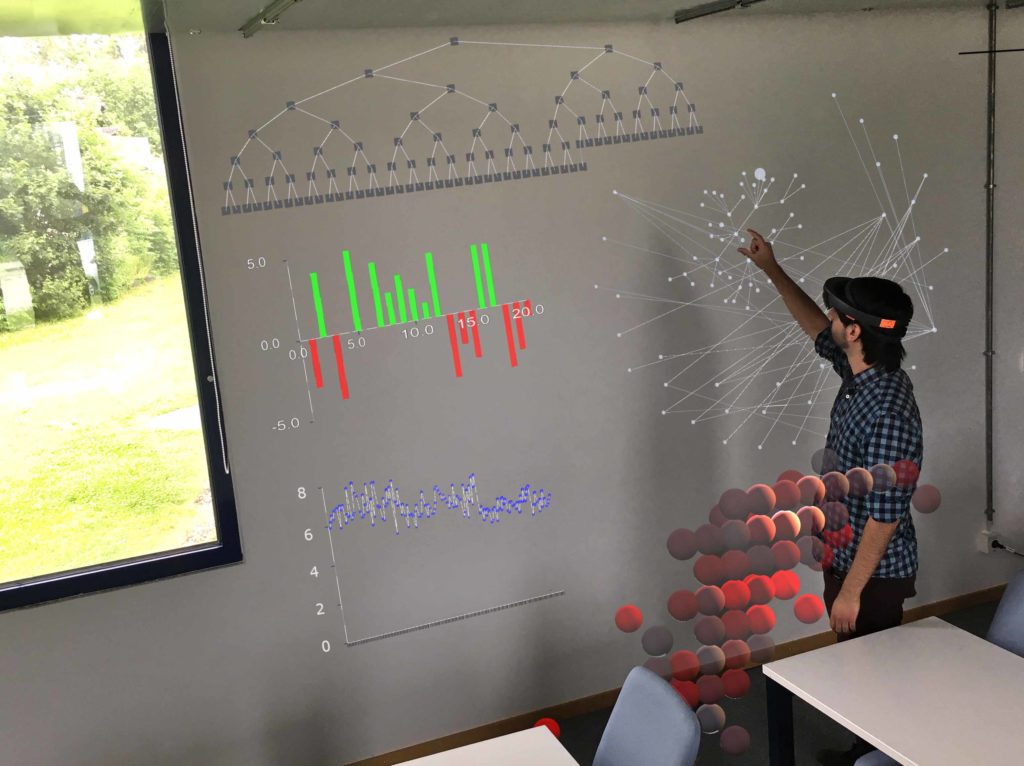I had the great opportunity to visit the Visualization Research Center, Universität Stuttgart (VISUS) as Guest Researcher from April to June of this year.
I have a bachelor and professional title in Computer Engineering and a master degree in High-performance Computing and Data Science. To develop a tool for visualizations in augmented reality (AR) at VISUS was a great and motivating challenge which expands my previous experience working on data and algorithms. This opportunity inspired me to contribute to this project and appreciate the benefits that augmented and virtual environments offer to visualize and analyze data.

I studied and worked with researchers from VISUS and the University of Chile about the agile creation of visualizations in immersive augmented reality. Our project aims to facilitate visualizations development in AR and explore them by using natural body movements (e.g., translation, rotations), interactions, and the real space to project them.
In my stay, I also could participate in VISUS Colloquiums where I talked about my published papers and master thesis in computational social science and the project which I developed with my team at VISUS. Also, I think I could get a particular knowledge in this field which brings the opportunity to combine high-performance computing, machine learning techniques, and efficient visualization techniques to understand hidden information in large datasets.
Today, I am in Valdivia, Chile, where I keep working on computational social science at the Austral University of Chile and also collaborating remotely in our project with the University of Stuttgart and the University of Chile. I really enjoyed the excellent experience to research at VISUS, the beauty of the city, and the campus nature and student events. This combination made me feel at home. I hope more students and researchers will be able to meet the VISUS group and work/research there because it helped not only to learn but also to keep my focus on the next steps in my academic career.
Finally, I want to thank Ph.D. Leonel Merino for the invitation, his hospitality, and everything that he taught about visualization, software engineering, and advice for presentations. Also, I thank to Prof. Dr. Daniel Weiskopf and his group for their advices and support. Thanks a lot to the SFR-TRR 161 and the Informatics Institute of the Austral University of Chile for the support and the funding.

